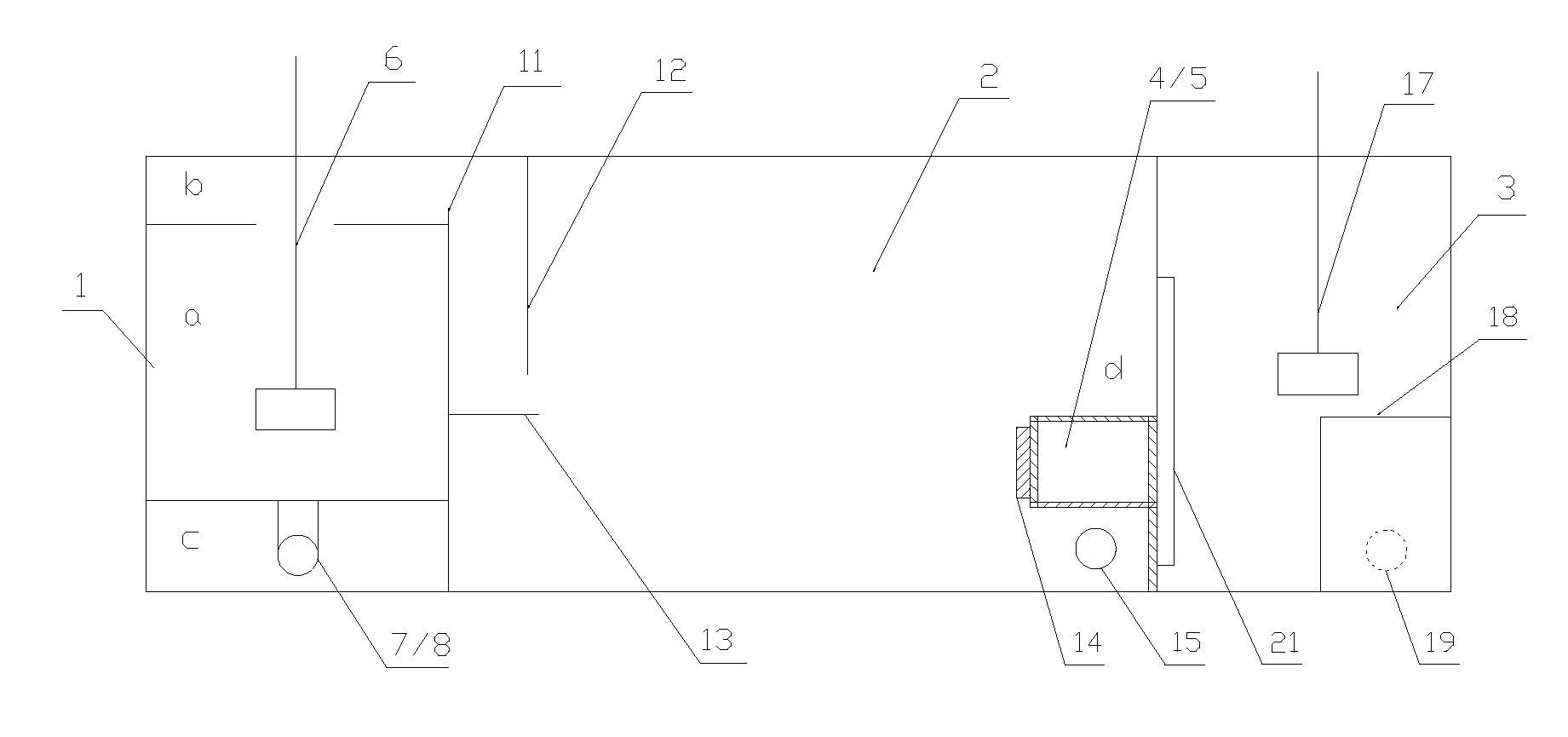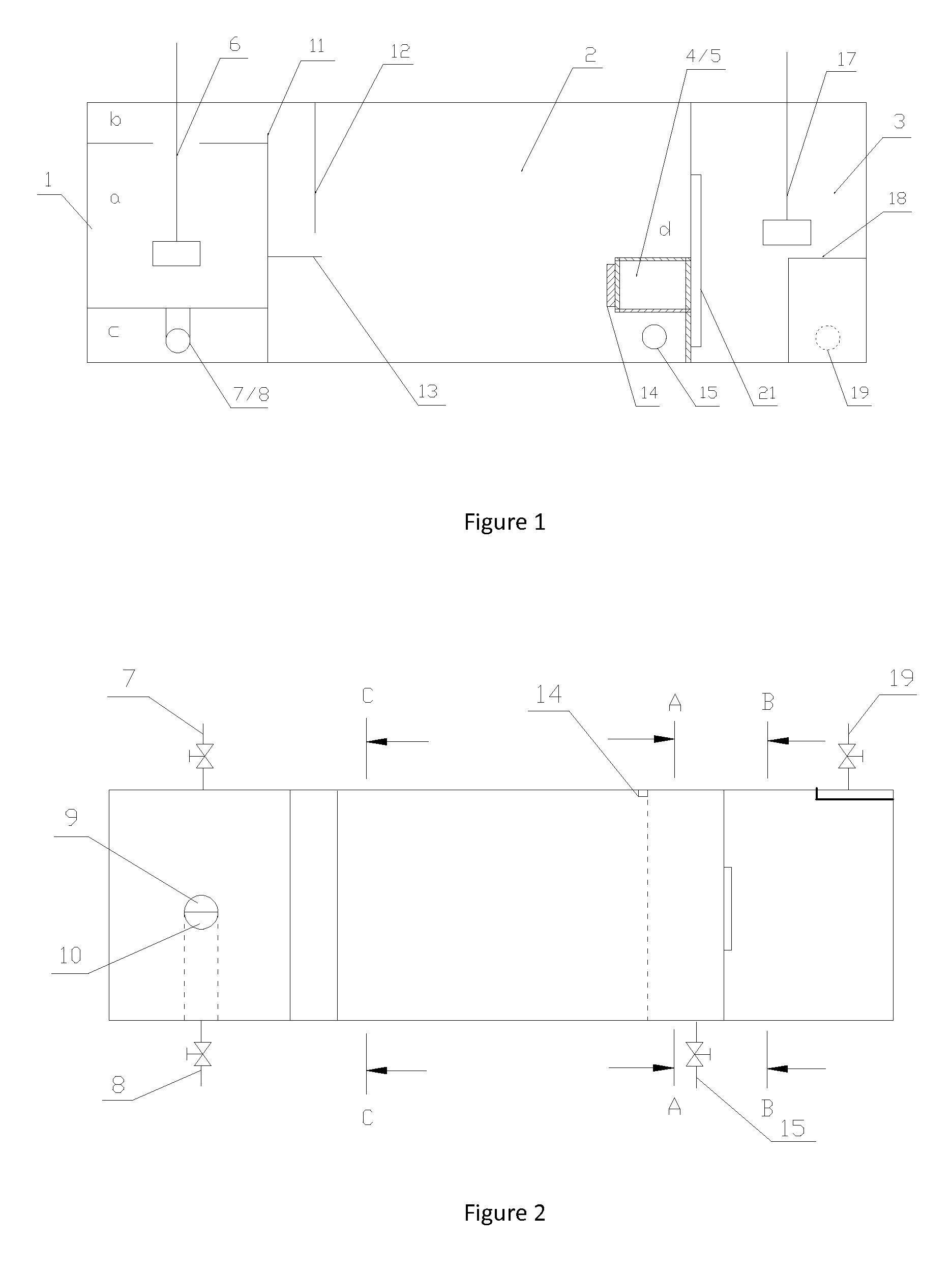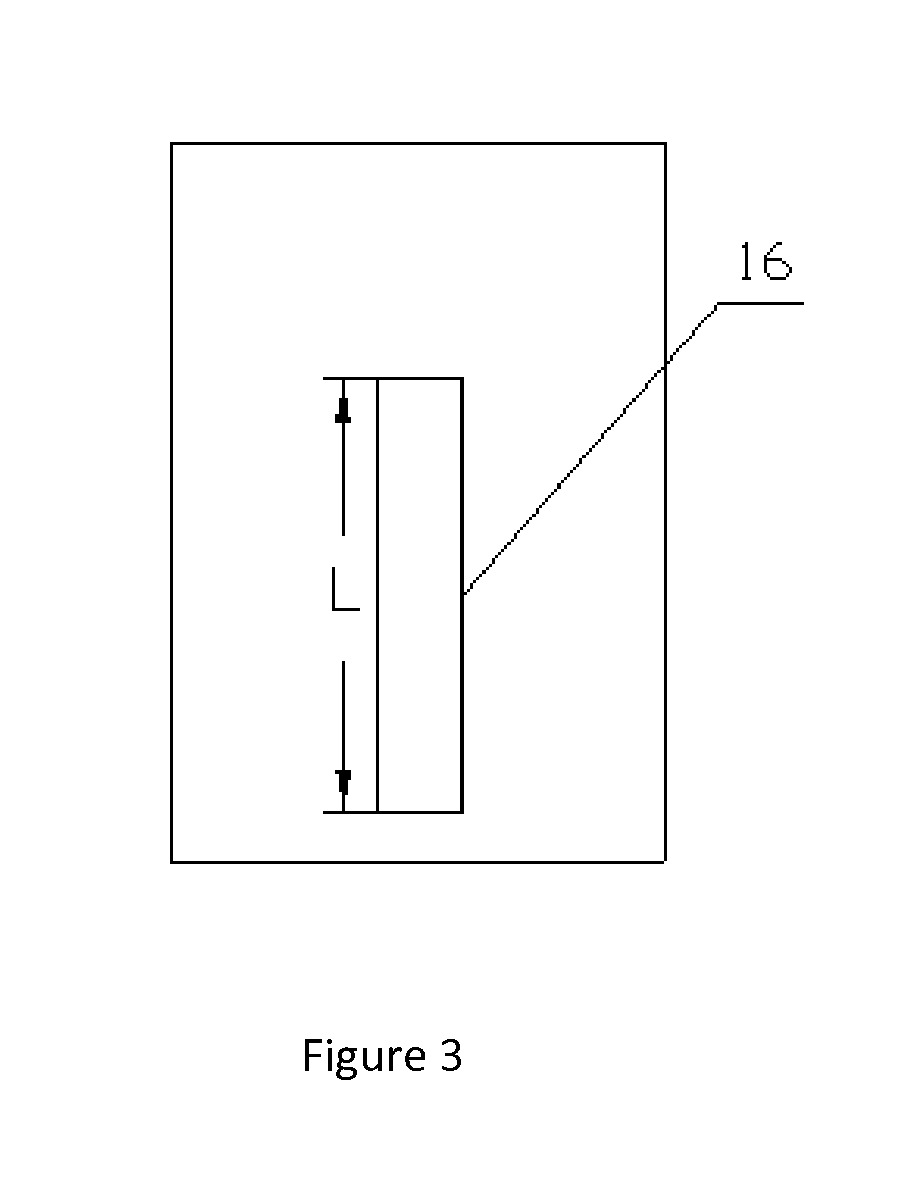Liquid-liquid-liquid three-phase continuous countercurrent extraction device and use thereof
a countercurrent extraction and liquid-liquid technology, applied in the field of extraction and separation, can solve the problems of low selectivity, long separation steps, and the traditional liquid-liquid two-phase extraction technique and the apparatus do not meet the requirements, etc., and achieves convenient operation and control, good processability, and easy scaling up
- Summary
- Abstract
- Description
- Claims
- Application Information
AI Technical Summary
Benefits of technology
Problems solved by technology
Method used
Image
Examples
example 1
Liquid-Liquid-Liquid Three-Phase Extraction and Separation of Pt, Pd and Rh
[0044]The apparatus of the present invention was applied to investigate the effects of one-step extraction and simultaneous three-phase separation of Pt, Pd and Rh in the three-liquid-phase system composed of diisopentyl sulfide-polyethylene glycol-ammonium sulfate-hydrochloric acid aqueous solution of Pt, Pd and Rh three-metal mixtures. The experiment was conducted on Pt, Pd and Rh mixed aqueous solution (Pt, Pd and Rh exist in hydrochloric acid aqueous solutions respectively in the form of aqueous PtCl62−, PdCl42− and RhCl63− ions. The initial total concentrations of Pt, Pd and Rh are 0.52 mmol / L, 0.94 mmol / L and 0.97 mmol / L, respectively). After two groups of three-stage continuous and countercurrent three-phase extraction, the contents of Pt, Pd and Rh were analyzed and determined in the diisopentyl sulfide organic top phase, the polyethylene glycol polymer middle phase, and the ammonium sulfate aqueous b...
example 2
Liquid-Liquid-Liquid Three-Phase Extraction and Separation of Ti, Fe and Mg
[0045]The apparatus of the present invention was applied to investigate the effects of one-step extraction and simultaneous three-phase separation of Ti, Fe and Mg in the three-liquid-phase system composed of P204 (diisooctyl phosphate)-polyethylene glycol-ammonium sulfate-Ti, Fe and Mg mixed aqueous solution. The experiment was conducted on Ti, Fe and Mg mixed aqueous solution from Panzhihua, Sichuan, China (Ti, Fe and Mg exist in aqueous solution of pH=2 as the form of aqueous Ti4+, Fe3+ and Mg2+ ions, respectively. The initial total concentrations of Ti, Fe and Mg are 30 mmol / L, 5 mmol / L, and 15 mmol / L, respectively). After two groups of three-stage continuous and countercurrent three-phase extraction, the contents of Ti, Fe and Mg were analyzed and determined in the P204 organic top phase, the polyethylene glycol polymer middle phase, and the ammonium sulfate aqueous bottom phase, respectively, obtained a...
example 3
Liquid-Liquid-Liquid Three-Phase Extraction and Separation of O-Nitrophenol and P-Nitrophenol Binary Mixture Solution
[0046]The apparatus of the present invention was applied to investigate the effects of one-step extraction and simultaneous three-phase separation of o-nitrophenol and p-nitrophenol in the three-liquid-phase system composed of nonane-polyethylene glycol-ammonium sulfate-o-nitrophenol and p-nitrophenol binary mixture aqueous solution. The experiment was conducted on o-nitrophenol and p-nitrophenol binary mixture aqueous solution (the initial concentrations of o-nitrophenol and p-nitrophenol are both 7.19 mmol / L). After two groups of three-stage continuous and countercurrent three-phase extraction, the contents of o-nitrophenol and p-nitrophenol were analyzed and determined in the nonane organic top phase, the polyethylene glycol polymer middle phase, and the ammonium sulfate aqueous bottom phase, respectively, obtained after separation by the three-phase liquid flow co...
PUM
| Property | Measurement | Unit |
|---|---|---|
| speed | aaaaa | aaaaa |
| height | aaaaa | aaaaa |
| width | aaaaa | aaaaa |
Abstract
Description
Claims
Application Information
 Login to View More
Login to View More - R&D
- Intellectual Property
- Life Sciences
- Materials
- Tech Scout
- Unparalleled Data Quality
- Higher Quality Content
- 60% Fewer Hallucinations
Browse by: Latest US Patents, China's latest patents, Technical Efficacy Thesaurus, Application Domain, Technology Topic, Popular Technical Reports.
© 2025 PatSnap. All rights reserved.Legal|Privacy policy|Modern Slavery Act Transparency Statement|Sitemap|About US| Contact US: help@patsnap.com



